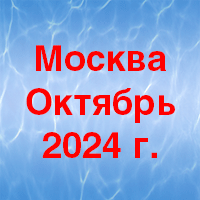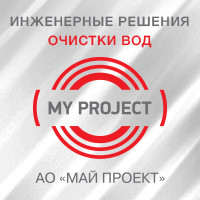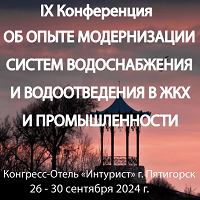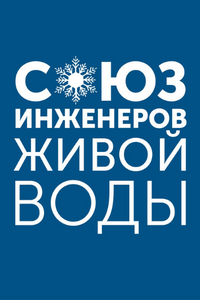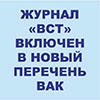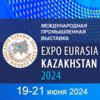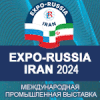№9|2014
WASTEWATER TREATMENT
bbk 000000
UDC 628.35
Studies of the toxicological effect of aluminium compounds on the activated sludge biocenosis in aeration tanks
Summary
To provide for eliminating phosphorus from wastewater in the process of tertiary treatment in order to inhibit the eutrophication of the receiving water bodies iron- and alumunium containing chemical are used. At the wastewater treatment facilities operated by SUE «Vodokanal of St. Petersburg» chemical removal of phosphorus from wastewater was carried out with imported ferrous sulfate (III); beginning from 2012 domestically-produced aluminium sulfate has been used. Transfer to aluminium sulfate was supported with a series of experimental and research studies; one of them aiming at studying the toxic effect of aluminium and ferrous (III) salts on activated sludge in aeration tanks. The review of different assessments of the toxicity of aluminium compounds in relation to plants and animals in general is presented; the results of individual studies of the aluminium sulfate and ferrous (III) sulfate effect on the activated sludge biocenosis in aeration tanks are presented. During the analysis mixed liquor samples treated with different chemical dosages were fed with acetate ions and aerated for 18 hours under similar conditions; after that the sludge samples were subject to microscopic examination. The absence of any toxic effect of aluminium sulfate on the sludge biocenosis at the metal concentrations up to and including 64 mg/l was shown which exceeded the chemical dosages used in practice dozens of times. During the introduction of higher dosages of aluminium sulfate or ferrous sulfate the inhibition of aquatic life was caused by pH decrease; whereas at pH correction with alkali liquor no symptoms of the biocenosis inhibition was noticed. Further increase of chemical and alkali dosages up to 1000 mg/l as aluminium or iron caused the inhibition of aquatic life because of the total solids increase which is fatal for the fresh water biocenosis.
Key words
aeration tank , aluminium sulphate , aluminium , toxic effect , activated sludge resistance , resistance of indicator microorganisms of activated sludge
The further text is accessible on a paid subscription.
For authorisation enter the login/password.
Or subscribe
REFERENCES
- Rublevskaia O. N., Kolosov D. E., Pankova G. A. [Substantiating the use of aluminium sulfate for the elimination of phosphorus from wastewater at the St.Petersburg wastewater treatment facilities]. Vodosnabzhenie i Sanitarnaia Tekhnika, 2013, no. 7, pp. 63–68. (In Russian).
- Kharlamova O. V. Izuchenie proiavlenii toksicheskogo deistviia aliuminiia s pomoshch’iu metodov biotestirovaniia [Studying the evidences of toxic effect of aluminium with the help of biotesting methods: PhD thesis in Biology. Obninsk, 2003, 119 p.].
- Baranovskaia A. T. Patamorfologicheskie proiavleniia toksikodinamiki soedinenii aliuminiia u zhivotnykh [Pathomorphological evidences of aluminium compounds toxicodynamics in animals: PhD thesis in Veterinary Medicine. Omsk, 2009, 173 p.].
- U. S. Department of health and human services. Agency for toxic substances and disease registry. Toxicological profile for aluminium, 2008.
- National Environmental Health Forum Monographs. Aluminium: Report of an International Meeting 20–21 April 1995. Brisbane, Australia, 1998.
- Povar I., Rusu V. [New type of diagrams of soluble and insoluble aluminium compounds distribution in natural heterogeneous water systems]. Voda: Khimiia i Ekologiia, 2011, no. 1, pp. 44–49. (In Russian).
- Barber S. A. Biologicheskaia dostupnost’ pitatel’nykh veshchestv v pochve [Biological availability of nutrients in soil. Moscow, Agropromizdat Publ., 1988, 376 p.].
- Cornelis R., et al. Handbook of elemental speciation. II: Species in the environment, food, medicine and occupational health. John Wiley & Sons, 2005, 784 р.
- Lione A. Aluminum toxicology and the aluminum-containing medications. Pharmacology and Therapeutics, 1985, v. 29, no. 2, pp. 255–285.
- Helliwell S., Batley G. E., Florence T. M., Lumsden B. G. Speciation and toxicity of aluminium in a model fresh water. Environmental Technology Letters, 1983, v. 4, pp. 141–144.
- Campbell P. G., Neville C. M. Mechanisms of aluminium toxicity to aquatic biota: Proceedings of the 194th National Meeting of the ACS, Division of Environmental Chemistry. V. 2. New Orleans, 1987.
- Proektirovanie sooruzhenii dlia ochistki stochnykh vod [Designing wastewater treatment facilities: Reference aid to SNiP 2.04.03-85. Moscow, Stroiizdat Publ., 1990, 65 p.].
- Vil’son E. N., Mel’nik E. A. [Optimal conditions of chemical phosphorus removal in the presence of activated sludge]. Voda: Khimiia i Ekologiia, 2012, no. 5, pp. 33–39. (In Russian).
- Zhmur N. S. Tekhnologicheskie i biokhimicheskie protsessy ochistki stochnykh vod na sooruzheniiakh s aerotenkami [Engineering and biochemical processes of wastewater treatment at the facilities with aeration tanks. Moscow, Akvaros Publ., 2003, 512 p.].


